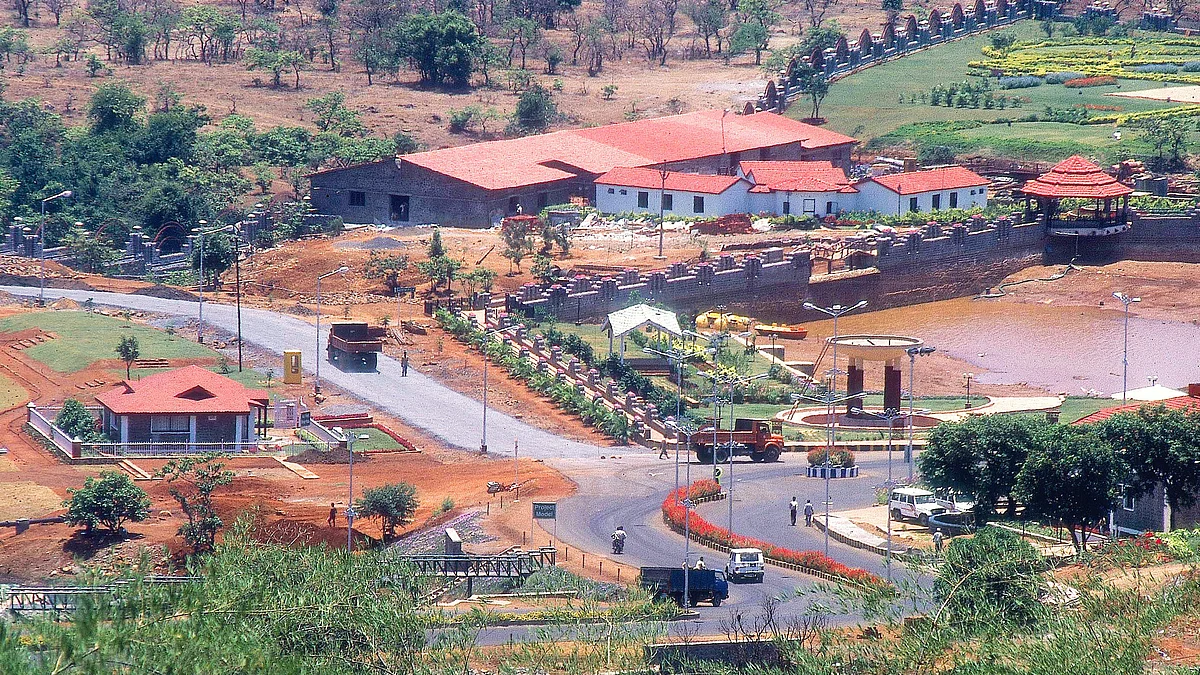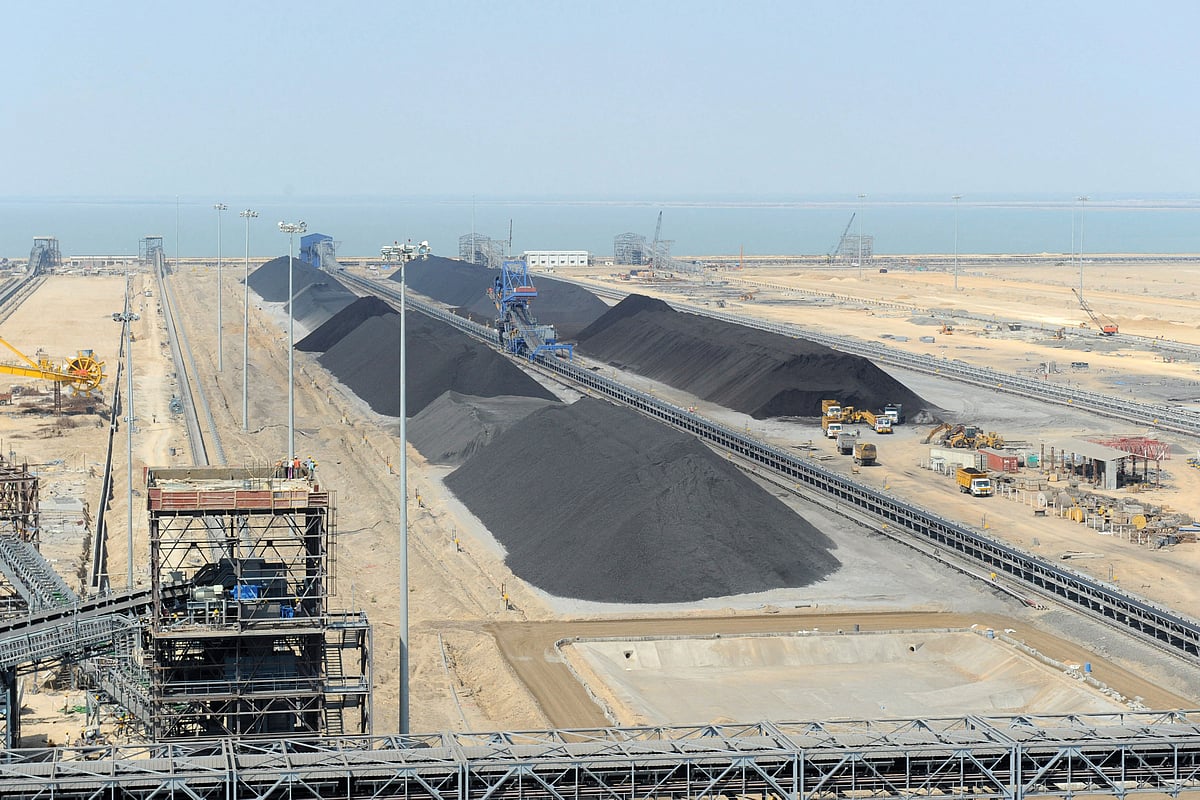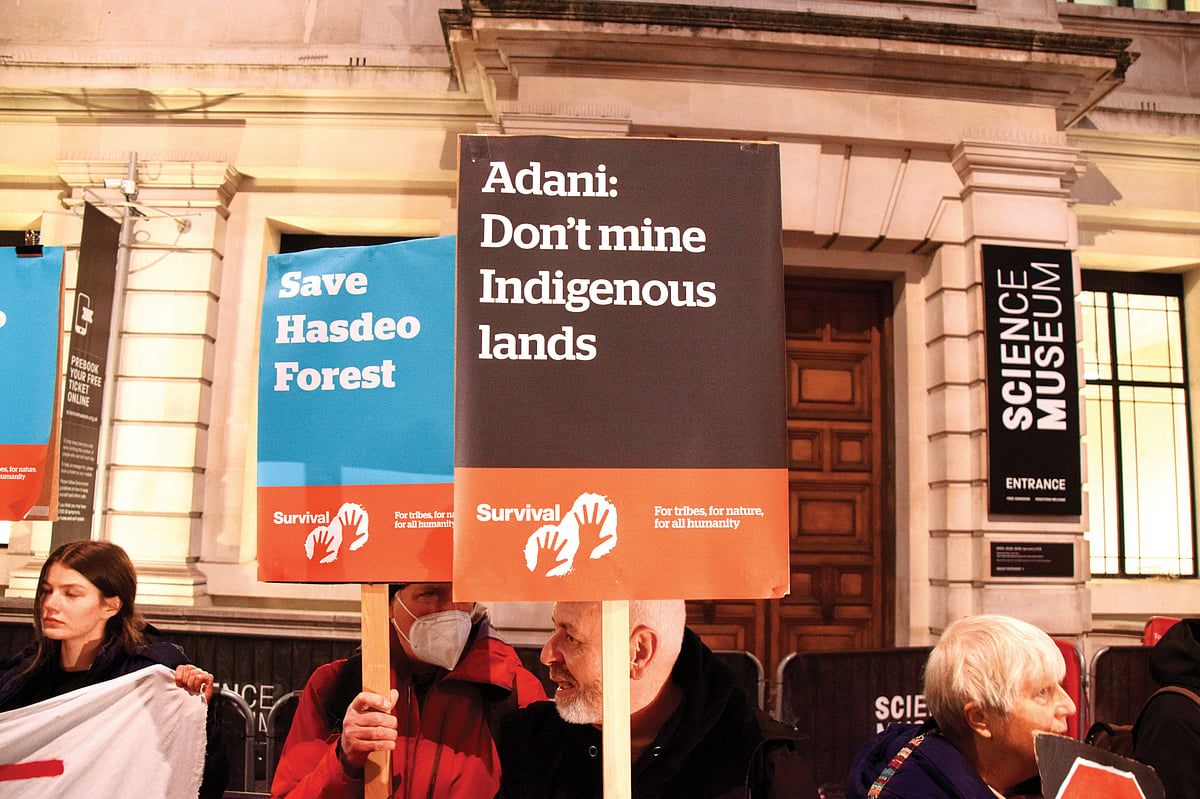This is all about the greed for land
How much land has the Adani Group acquired in the last few years? Even rough estimates are hard to come by, so we tried to list what we know

How much land has the Adani Group acquired in the last few years? Even rough estimates are hard to come by. Let’s attempt a listing.
On 6 October, the 17-acre Sahara Shahar — the late Subrata Roy’s private township with its own helipads, restaurants and guesthouses — was sealed and handed over to the Lucknow Development Authority (LDA). Media reports suggest that this is one of the 88-plus Sahara properties the Adani Group is set to acquire, including the 8,810-acre Aamby Valley City in Maharashtra.
On 11 September, the Bihar government handed over a thousand acres of land in Bhagalpur — acquired years ago for the public sector NTPC — to the Adani Group at one rupee per acre per year.
In Mumbai, the Adani Group has already been handed a staggering array of public assets — the airport, the 180-acre Air India colony, parts of the Deonar dumping ground, plots across Bhandup, Kanjurmarg, Vikhroli, Malvani... Even 255 acres of the ecologically crucial salt pans haven’t been spared. All in the name of the Dharavi ‘redevelopment’ project.
On 7 June, Congress MP Varsha Gaikwad led a massive demonstration protesting the allotment of land parcels owned by Mother Dairy in Kurla to “industrialists who treat Mumbai’s precious land as their private property”.
Now, the group reportedly has its eyes on Railway-owned land.
In Odisha’s Koraput district, thousands of tribals led a protest in March against the allotment of the sacred Balada Nageswar Hill to the Adani Group, which they say was auctioned without the consent of the gram sabhas. Mundra Aluminium, a subsidiary of the Adani Group, was the preferred bidder for the Balada block, which holds an estimated 22.13 million tonnes of bauxite.
Meanwhile, Kalinga Aluminium, another subsidiary of the Adani Group, has sought environmental clearance for yet another project in Bheja Mouza. At a public hearing on 6 March, Odisha Pollution Control Board officials claimed due process had been followed, but villagers and panchayat leaders said that was not the case.

Odia newspapers reported that the Union ministry of environment and forests withdrew the Vedanta Group’s clearance in order to oblige the Adanis. Vedanta had won the bloc in a March 2023 auction when the BJD was in power and Naveen Patnaik was chief minister.
After the BJP government assumed office, the ministry revoked the clearance in July 2025, on the grounds that the gram sabha resolutions supporting the diversion had been fraudulently obtained.
In Chhattisgarh, Gond and Oraon tribals, the original inhabitants of Hasdeo Aranya — the last contiguous forest in central India — are opposing the Forest Advisory Committee’s approval to divert 841 hectares of prime forest land for Adani’s Parsa Open Cast Mine in Surguja and Surajpur districts.
They say their signatures of consent were forged. Panchayat members warn that the mining project will evict thousands of tribals. Yet, the clearance has not been halted.
In Maharashtra’s Kalyan district, villagers are up in arms against Ambuja Cement — another Adani subsidiary — setting up a cement grinding plant on land that formerly belonged to the National Rayon Company. Their objections — the plant will affect agriculture and aggravate air and water pollution — have been brushed aside. In fact, the government has changed the rules, making environmental clearance redundant.
Land in Maharashtra’s Chandrapur district has always been coveted for its rich coal, iron ore and limestone deposits. In August 2022, Ghadchandur — home to Ambuja Cement and other factories — was granted environmental clearance. Shortly afterward, the Adani Group acquired Ambuja Cement.
In 2024, ‘company people’ arrived and farmers were pressured to sell their land at Rs 35 lakh per acre. Turns out their plots had not been sold to one company (Ambuja) but 13 different companies, all registered at the same address: 104 Ramsukh House, Shivajinagar, Pune.

All 13 companies belong to the Rucha Group. While Ambuja Cement’s environmental clearance included compensation and support for farmers — alternative land, vocational training and a one-time livelihood payment of Rs 5 lakh per family — these conditions were voided when Rucha Group bought the land in 2024. In 2025, Ambuja reportedly acquired Rucha for Rs 298.61 crore. The conned farmers have since resigned themselves to their fate.
While the Centre blames foreign forces — Pakistani and Chinese — for the unrest in Ladakh, local voices tell a different story. Climate activist Sonam Wangchuk, who was arrested on 26 September while on a peaceful hunger strike, said Ladakhis had welcomed Union Territory status in 2019 but feared it would leave the region vulnerable to corporate exploitation of land and resources.
“This is why we wanted the Centre to provide us with safeguards and inclusion in the Sixth Schedule to protect our land, culture and environment,” he said in an interview. This demand was ignored. The public perception, Wangchuk said, is that the Centre caved in to pressure from powerful industrial lobbies. Though he stopped short of naming anyone, he acknowledged that the Adani Group has been frequently linked to the proposed renewable energy projects in the region.
Rahul Gandhi, while visiting Ladakh in 2023, was more forthright. In a public address he said, “The BJP knows that if you are given representation then they will not be able to take away your land. This is all about land, they want to take away your land and give it to Adani so that he can set up his projects, but will not share the benefits with you…”
In Madhya Pradesh, even the Fifth Schedule has failed to protect the forests of Hasdeo.
In 2023, when the Adani Group was granted approval for the Dhirauli coal mining project — which involved the diversion of around 3,500 acres of forest land across five villages — the ministry of coal had informed the Lok Sabha that the area was protected under the Fifth Schedule of the Constitution, and the tribal population protected under the Forest Rights Act, 2006. Tribal rights and constitutional safeguards were brushed aside, and the industrialist’s interests upheld.
In August this year, a video clip of Gauhati High Court judge Justice Sanjay Kumar Medhi went viral. In the clip, Justice Medhi exclaimed at the allotment of an entire district in Assam (Dima Hasao) to a private cement company — all 3,000 bighas of it. The Adani Group issued a formal denial, clarifying that it had no connection to Mahabal Cement which won the bid.
As Newslaundry reported, it was, in fact, ‘a fight older than the viral clip’. Ambuja Cement was allotted over 1,200 bighas for limestone mining, while Mahabal Cement, a subsidiary of Ambuja, received land in Umrangso, Dima Hasao.
Since December 2024, 22 villagers have challenged the allotment in Gauhati High Court, alleging the Dima Hasao Autonomous Council bypassed due process. Petitioners argue that the land is communally owned under tribal customs and was traditionally allocated by village elders.
Meanwhile, in Kokrajhar, tensions are running high after the Bodoland Territorial Council allotted 3,400 bighas for an Adani thermal power project in June 2025 without consulting the public.
The Adani Port and Mundra SEZ were allowed to buy 3,585 hectares at prices ranging from Re 1 to Rs 32 per square metre when the market rate was over Rs 1,500 per square metre. A Forbes report claimed that Adani acquired this land on a 30-year renewable lease for as little as one US cent per square metre. Adani then sublet this land to companies like Indian Oil for as much as $11 a square metre.
At the 2009 Vibrant Gujarat summit, the state government granted the Adani Group a five-year tax break worth over Rs 32 billion. As per the government’s own data, despite an investment of Rs 1.32 trillion in the Adani SEZ port and power plant, the projects generated only 38,875 jobs. That amounts to Rs 33.8 million per job — possibly the most expensive jobs ever created.
Follow us on: Facebook, Twitter, Google News, Instagram
Join our official telegram channel (@nationalherald) and stay updated with the latest headlines
